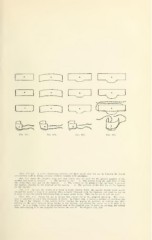Page 661 - My FlipBook
P. 661
cm] cz^
=^^
^^:^^^^ '^sit—
Fig. 411. Fig. 413. Fig. 414.
Figs. 411-413. A series illustrating inatricrs cut from motiil plate for use in forming the fourth
surronndiiip wall in filling proxinio-occlusal cavities with amalgam.
Fig. 411 shows the simplest form and that which may be nseri for the greater number of the
smaller and medium cavities. a. The matrix as cut. it. The matrix with the ends bent so that
the sliarp edges may not cut tlic ligature. c. The corners at the gingival edge are bent to prevent
the ligature slipping to the gingival of the matrix. d. The position of the first lap of the ligature
on the matrix.
Fig. 412. In case the crown of a tooth is badly broken down, the matrix should reach nearly
around the tooth to keep it in position when securely wrapped with the ligature, and must be cut on
a curve to give the proper bell-crown form of many molar teeth. This can be cut to suit the case.
Figs. 413, 414. Forms for use in decays that extend far in the gingival direction. The exten-
sion is intended to cover this extension of decay. In Figure 414. c shows a method of attaching the
first lap of the ligature to the matrix before placing the matrix in position, by cutting two slits,
turning up the piece between thcni. laying in the ligature and closing the pieces'nii it to hold it in
place. In d, a crimp is bent in the central part of the gingival edge to assist i» catching the rubber
dam and carrying it to the gingival line before the matrix. Sec Figures 415, 516.


